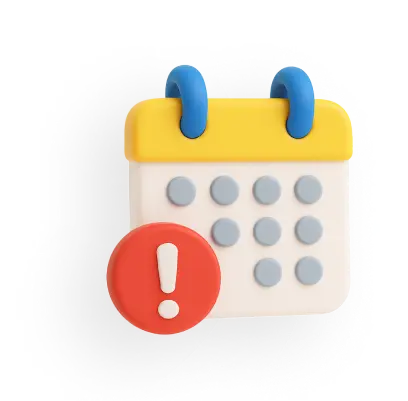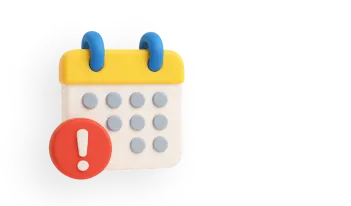Cross Cheque - Meaning, Types & How to Cross Cheques?
Whenever you write a cheque, you will want it to safely reach your intended recipient. However, what happens if you lose the cheque or it ends up in the wrong hands? There is the possibility that it might be cashed by somebody else, an idea that can be quite frightening. For this reason, a crossed cheque becomes incredibly useful.
A crossed cheque, easily identified by two parallel lines drawn across its face, adds an essential layer of security. The crossed cheque stipulates that its proceeds can only be paid into a bank account, thus prohibiting direct cash encashment.
This simple yet effective feature can safeguard your transaction and give you peace of mind. This blog elaborates on the idea and benefits of crossed checks.
Cross Cheque Meaning
A crossed cheque is easily recognised by two parallel lines drawn across its face, either across the cheque or in its top left corner. This crossing is a critical security measure that ensures that the recipient can only deposit the funds into a bank account and not encash it directly over a bank counter.
Simply put, crossed cheques are those that are endorsed by another bank in addition to endorsement by the payer's(the buyer's) bank. This endorsement allows the transfer of funds directly from the bank of the payer to the bank of the payee. The requirement for transfer via a banking institution helps to ensure that funds belonging to the payer are protected against misuse.
Crossed cheque system is widely used in India and has now become the cornerstone of secure banking, rendering smooth fund transfer between different banks and easy verifications of both the sender and receiver. This extra bit of assurance has led to their integration into modern banking.
How to Cross a Cheque?
Crossing a cheque is quite simple; it makes a cheque more secure. Just follow the following steps to cross a cheque correctly:
- Draw the Parallel Lines: Two parallel lines must either cross the cheque in a straight line, or it may be crossed diagonally. Allow enough space for the lines to be clearly visible spanning most of the cheque.
- Add Specific Instructions: If you want to carry out general crossing, then you must write "and Co." or "not negotiable" inside those two lines. For special crossing, include the name of the bank between the lines to specify the bank through which the cheque must be processed. You can also create an account payee cheque by writing the words “A/C payee” or “Account Payee only” within the two lines.
- Write the Rest of Details: Fill up the rest of the cheque, including its date, payee name, beneficiary’s name and amount to transfer (in words and figures).
- Sign the Cheque: Complete the process by signing the cheque in the area designated for drawer’s signature.
Who Can Cross a Cheque?
As per Section 125 of the Negotiable Instruments Act, only these parties can cross a cheque:
- The Holder: A holder of the cheque can cross it, whether it is uncrossed or already crossed. Holders can convert a general crossing into a special crossing by specifying a bank's name. They may also add the words "non-negotiable" to enhance security.
- The Drawer: The individual issuing the cheque has the authority to cross it.
- The Banker: A banker in whose favour a cheque is crossed (special crossing) can re-cross it in favour of another banker or an agent for collection purposes. This special double-crossing process ensures secure handling during interbank transfers.
Why Cross a Cheque?
Crossing a cheque is a popular practice that offers better security and clarity in financial transactions. Here are several key reasons why individuals and businesses prefer crossed cheques:
- Increased Security: Two parallel lines on the cheque restrict unauthorised cashing or misuse.
- Clear Bank Instructions: Crossing makes the cheque dockable for depositing the amount directly into a bank account and not for cash withdrawal.
- Traceable Transactions: Payments being processed through crossed cheques have a clear trail of their transfer, thereby fostering accountability and dispute resolution. Put simply, crossed cheques are the vehicles for sensible, safe, electronic fund transfer.
- Fraud Prevention: : Only the intended beneficiary has the access to the money, significantly reducing the risk of any theft or fraud.
- Optional Annotations: You can add words like "and company" or "not negotiable" for extra protection, though the crossed lines alone suffice.
Uncrossing the Cheque
Once a cheque is crossed, the payee cannot uncross it. A crossed cheque is non-transferable, meaning you cannot endorse or pass it on to a third party. The only permissible action is for the payee to deposit the cheque into a bank account in their name.
Technically, a payer can uncross a cheque by writing “Crossing Cancelled” across its face. However, experts strongly discourage this practice, as it removes the security measures provided by a crossing, leaving the transaction vulnerable to misuse.
How Does a Crossed Check Work?
When you get a crossed cheque, you need to deposit it directly into your bank account instead of cashing it at the bank counter. To complete this process, you must have an active bank account. Once you have deposited the crossed cheque at a cheque dropbox or to a bank representative, the bank will credit the amount straight to your account.
Crossed Check vs Uncrossing a Check
Here is the most important distinction between crossing and uncrossing cheques:
- Crossing Cheques: These are non-transferable and can only be deposited into the payee’s account. You cannot sign this over to a third party, providing better security.
- Uncrossing Cheques: While the payee cannot uncross a cheque, the payer has the authority to do so. This requires that the cheque leaf have the words "Crossing Cancelled" written on it. However, this takes away original road markers and, almost always, is not considered advisable. Crossed cheques are still regarded as the preferred mode of safe, reliable transactions, ensuring that funds go to the intended recipient with as little risk as possible.
Types of Cheque Crossing
There are different ways of crossing that give added security and provide directions on handling payment:
- Account Payee Crossing: By writing "Account Payee" or "A/C Payee Only," this prevents cash withdrawals or transfers and allows funds to be deposited only in the account of the payee.
- Special Crossing (Section 124): Includes the name of a specific bank between the lines, the financial institution ensures the payment processing only through that bank.
- General Crossing (Section 123): Two parallel lines, often with words like "and company" ensure that only direct payment through a collecting bank is allowed. It is not possible to cash these funds directly.
- Not Negotiable Crossing (Section 130): This type of cheque crossing allows the cheque to be transferred but not negotiated. In such instances, the cheque holder assumes the role of a transferor only.
Crossed cheques in finance involve enhanced security and traceability regarding transactions. Knowledge regarding their purpose, features, types, and benefits will ensure individual and business users can confidently make financial transactions via their extra-secured cheques. Crossed cheques, when used with the proper understanding and care, are a safe manner through which money transactions can be secured and facilitated.
Related Articles:
1. Cancelled Cheque - What Is It? When Do You Need It?
2. What is Positive Pay System (PPS) for Cheques
3. Dishonoured Cheque: Meaning, Reasons, Charges, Consequences
Frequently Asked Questions



